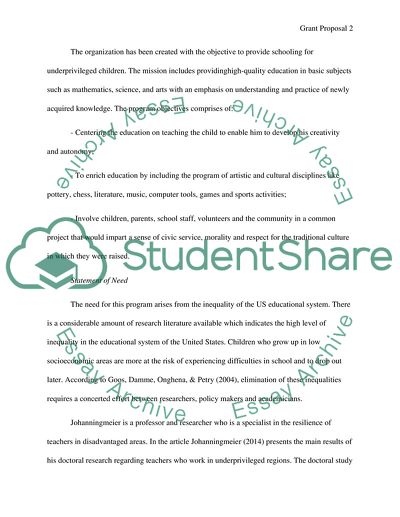Cite this document
(“Schools for the Underprivileged Assignment Example | Topics and Well Written Essays - 3750 words”, n.d.)
Schools for the Underprivileged Assignment Example | Topics and Well Written Essays - 3750 words. Retrieved from https://studentshare.org/education/1699654-grant-writing
Schools for the Underprivileged Assignment Example | Topics and Well Written Essays - 3750 words. Retrieved from https://studentshare.org/education/1699654-grant-writing
(Schools for the Underprivileged Assignment Example | Topics and Well Written Essays - 3750 Words)
Schools for the Underprivileged Assignment Example | Topics and Well Written Essays - 3750 Words. https://studentshare.org/education/1699654-grant-writing.
Schools for the Underprivileged Assignment Example | Topics and Well Written Essays - 3750 Words. https://studentshare.org/education/1699654-grant-writing.
“Schools for the Underprivileged Assignment Example | Topics and Well Written Essays - 3750 Words”, n.d. https://studentshare.org/education/1699654-grant-writing.


